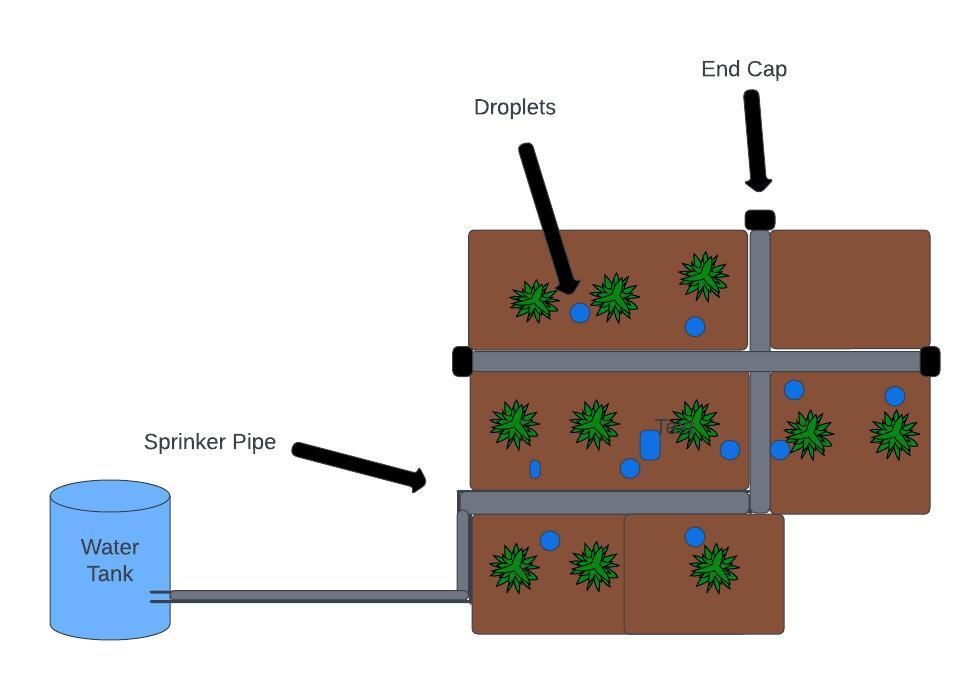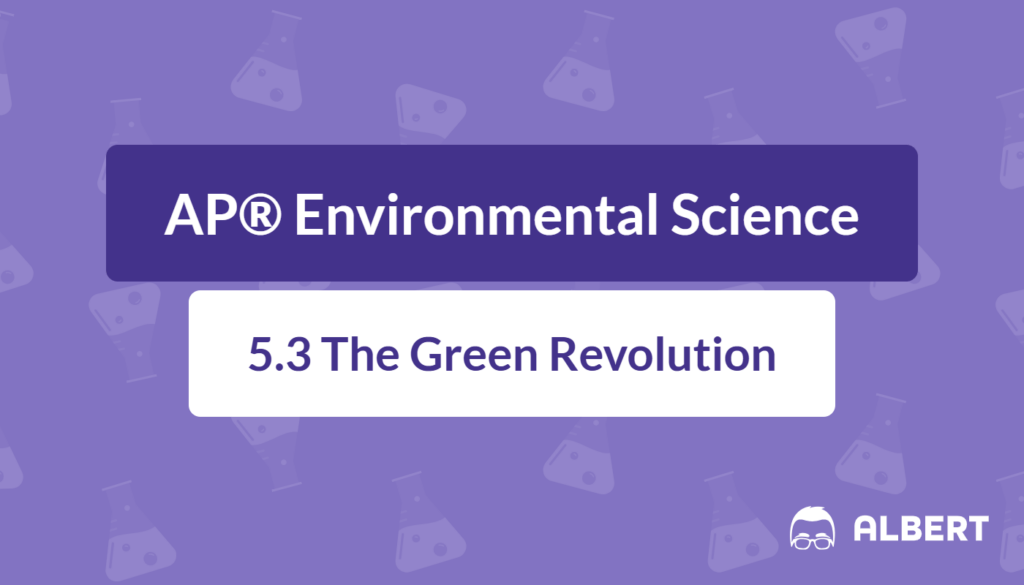What We Review
Introduction
The Green Revolution brought about a groundbreaking shift in global food production during the mid‑20th century. By introducing modern farming techniques and high‑yield crop varieties, society managed to fight widespread hunger and malnutrition in many developing countries. The Green Revolution definition refers to this period of rapid agricultural advancement. This movement remains a major topic in AP® Environmental Science because it shows how scientific innovation can address an essential environmental challenge: feeding a growing population. However, the Green Revolution also led to complex environmental and social impacts. Consequently, it is important to understand its core strategies, benefits, and drawbacks.
Below is a breakdown of the Green Revolution’s main components, from mechanization and genetically modified organisms to new irrigation and fertilization practices. Each subsection includes an example or step‑by‑step solution to guide you through these concepts. By the end, you will see how this revolution reshaped agriculture—and why it continues to influence sustainable systems today.
What is the Green Revolution?
The Green Revolution refers to a set of large‑scale agricultural developments that began in the 1940s and peaked in the 1960s. It helped countries such as Mexico and India dramatically boost crop yields. Scientists introduced high‑yielding varieties of grains (particularly wheat and rice) alongside advanced farming methods. The main goal was to prevent food shortages, especially in rapidly growing populations.
These new techniques involved several strategies: heavy use of fertilizers, modern irrigation systems, and the development of pest‑resistant crops through plant breeding. Over time, these innovations became essential to feeding millions of people. Yet they also triggered debates about the balance between maximizing production and minimizing environmental harm.
Major Strategies of the Green Revolution
Mechanization of Farming
Mechanizing agriculture drastically changed how farmers grew and harvested crops. Instead of relying on manual labor or animal power, farmers began using tractors, harvesters, and other equipment. As a result, they cultivated larger plots of land in less time, thus increasing efficiency and profit. However, this shift also increased reliance on fossil fuels, which can affect air quality and contribute to climate change.
Example: Tractors vs. manual labor
- A single tractor can plow multiple hectares in the same time it takes many laborers to plow a fraction of that area.
- Efficiency gains lead to more planting cycles per year, boosting total food production.
Step‑by‑step analysis:
- Prepare the field: Start by organizing farmland into even sections for efficient plowing.
- Use machinery: Operate tractors that can plow, till, or seed the land.
- Reduce labor hours: Because machines take over tough jobs, fewer workers are required.
- Increase output: Larger areas can be cultivated, which leads to more crops harvested per season.
Genetically Modified Organisms (GMOs)
Genetically Modified Organisms (GMOs) are plants or animals whose genetic makeup has been altered in a laboratory. These modifications aim to create desirable traits, such as resistance to pests or tolerance of harsh environmental conditions. Many scientists argue that GMOs can reduce pesticide use and ensure stable yields. Nevertheless, concerns remain about potential ecological effects and the long‑term safety of genetically altered foods.
Example: Bt corn
- Bt corn contains a gene from the bacterium Bacillus thuringiensis. This gene produces a protein toxic to certain insects, helping the corn resist pests without additional insecticide.
Step‑by‑step explanation of how genetic modification works:
- Identify the gene: Scientists isolate a beneficial gene (e.g., pest resistance).
- Insert the gene: Using molecular tools, they transfer that gene into the target organism’s genome.
- Grow new plants: The modified seeds are planted, and farmers observe if the trait performs as intended.
- Maintain trait: Future generations inherit the altered gene, continuing that trait in the crop line.
Fertilization
Fertilizers play a major role in boosting plant growth by adding essential nutrients to the soil. Common nutrients include nitrogen, phosphorus, and potassium. Organically derived fertilizers (like compost) release nutrients slowly, improving soil structure. Synthetic fertilizers offer a quicker nutrient supply but can lead to runoff issues when not handled correctly.
Example: Use of nitrogen fertilizers
- Nitrogen fertilizers have become widespread due to their effectiveness in supporting leafy, green growth and raising crop yields.
Step‑by‑step guide to calculating fertilizer application rates:
- Determine the target nutrient. Suppose you want to add 50 kg of nitrogen (N) per hectare.
- Identify the fertilizer’s nitrogen content. For example, a fertilizer labeled “30‑0‑0” has 30 % nitrogen.
- Apply the formula: \text{Fertilizer Needed (kg/ha)} = \frac{\text{Target Nitrogen (kg/ha)}}{\text{Nitrogen Content (\%) } \times 0.01}
- Plug in values: \text{Fertilizer Needed (kg/ha)} = \frac{50}{30 \times 0.01} = \frac{50}{0.3} = 166.67\text{ kg/ha}
- Adjust for practical use: You may round to 167 kg/ha for application.
Irrigation
Irrigation systems provide crops with the necessary water for growth. Traditional flood irrigation methods can be wasteful, but modern techniques like drip irrigation deliver water directly to plant roots. Consequently, precision watering saves resources and minimizes evaporation loss.
Example: Drip irrigation in arid regions
- Drip lines release water slowly through emitters placed near each plant. This method reduces evaporation and runoff, making it ideal for water‑scarce environments.
Step‑by‑step comparison of water efficiency:
- Estimate water volume: Traditional flood irrigation might use 3,000 liters for a specific field.
- Measure drip irrigation volume: The same plot could use only 1,000 liters through drip lines.
- Compare losses: Flood irrigation leads to evaporation and oversaturation, while drip targets only roots.
- Calculate savings: Therefore, drip irrigation can save up to 2,000 liters for this plot.
- Evaluate long‑term impact: Over time, water conservation reduces costs and protects local water resources.

Pesticides
Pesticides are chemicals designed to destroy or suppress pests, including insects, weeds, and fungi. They can significantly increase crop yields, although overreliance on pesticides may create resistant pest populations and harm beneficial organisms. Integrated pest management (IPM) offers a balanced approach by combining chemical, biological, and cultural practices to maintain pest levels below damaging thresholds.
Step-by-step example of integrated pest management (IPM):
- Monitor the field: Observe pest populations regularly.
- Identify thresholds: Determine the pest density that causes economic damage.
- Apply physical or biological controls: For instance, introduce natural predators or rotate crops.
- Use chemicals selectively: Only apply pesticides if pest numbers exceed thresholds.
- Review outcomes: Evaluate whether the pest control strategy remains effective and environmentally sound.
Positive Effects of the Green Revolution
The Green Revolution had clear benefits for many regions:
- Increased food production: High‑yield crop varieties raised the overall supply of staples like wheat and rice.
- Improved nutrition: Greater availability of grains helped reduce hunger and prevent malnutrition.
- Economic development: Agricultural sectors grew rapidly, creating more jobs and stimulating local economies.
For instance, countries such as India and Mexico made significant progress in eradicating famines. By using high‑yield seeds and modern inputs, they met the growing demand for food. Moreover, these nations exported surplus grains, consequently improving their global economic position.
Negative Consequences of the Green Revolution
Despite its successes, the Green Revolution also led to several challenges:
- Environmental impacts: Heavy fertilizer use can degrade soil and pollute nearby water bodies through nutrient runoff. Excessive irrigation often depletes resources, particularly in regions with limited freshwater supplies.
- Loss of biodiversity: Monocropping (the same crop grown repeatedly) reduces habitat variety, which can threaten local species.
- Health concerns: Pesticide residues in soil and water may affect human health.
Example: Water pollution from fertilizer runoff
- Overapplication of nitrogen fertilizer leads to surplus nitrogen in the soil.
- Rainwater washes these nutrients into streams and rivers.
- Excess nitrogen can trigger algal blooms that deplete oxygen.
- Fish and other aquatic life suffer from low‑oxygen conditions, reducing biodiversity.
- Dead zones may form when oxygen levels drop too low for aquatic organisms to survive.
The Future of Food Production
Today, researchers explore more sustainable alternatives to keep feeding a growing global population while limiting environmental harm. Key trends include agroecology (systems working in harmony with natural ecosystems) and organic farming (avoiding or minimizing synthetic inputs). Many farmers rotate different crops, use cover crops to replenish soil nutrients, and integrate livestock—all to maintain biodiversity and boost soil health.
Furthermore, technological advancements such as precision agriculture employ data analytics, drones, and satellite imagery to optimize farming inputs. This level of monitoring can reduce overuse of fertilizers and pesticides. In addition, certain innovations use renewable energy sources to power farm machinery, thereby lowering carbon emissions. As sustainability becomes more urgent, efforts to merge environmental responsibility with economic viability will shape the next phase of agricultural development.
Conclusion
The Green Revolution fundamentally transformed global agriculture, enabling rapid growth in food production to match a fast‑rising population. By adopting mechanized farming, GMOs, fertilizers, efficient irrigation, and pesticides, many countries escaped devastating famines and created pathways to better nutrition. However, this success came with significant ecological costs, including soil degradation, biodiversity loss, and health risks.
Balancing increased food production with environmental stewardship remains a key challenge in AP® Environmental Science. Future farming must focus on sustainable methods—integrating agroecological principles, data‑driven management, and cleaner energy sources. Students and professionals alike can continue exploring innovative solutions that preserve soil fertility, protect water resources, and ensure healthy outcomes for both people and the planet.
Key Vocabulary
- Green Revolution: A global shift in agriculture using new technology and high‑yield crops to radically boost production.
- Genetically Modified Organisms (GMOs): Organisms with laboratory‑altered genetic material to promote specific advantageous traits, such as pest resistance.
- Mechanization: The process of introducing machines (like tractors) into farming to increase efficiency and productivity.
- Fertilization: Adding nutrients such as nitrogen, phosphorus, and potassium to soil to improve plant growth.
- Irrigation: Controlled application of water to plants through systems like drip lines or sprinklers, essential for successful crop cultivation in water‑scarce areas.
- Pesticides: Chemicals (e.g., insecticides, herbicides) used to manage or eliminate pests that damage or destroy crops.
Sharpen Your Skills for AP® Environmental Science
Are you preparing for the AP® Environmental Science test? We’ve got you covered! Try our review articles designed to help you confidently tackle real-world AP® Environmental Science problems. You’ll find everything you need to succeed, from quick tips to detailed strategies. Start exploring now!
Need help preparing for your AP® Environmental Science exam?
Albert has hundreds of AP® Environmental Science practice questions, free response, and full-length practice tests to try out.








